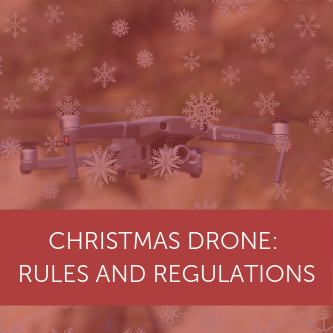
Training & Regulations
UAV for Christmas: Your guide to drone regulations
A guide to the rules and regulations of flying a drone, as well as pre-flight tips and winter-flying advice. ... Read More
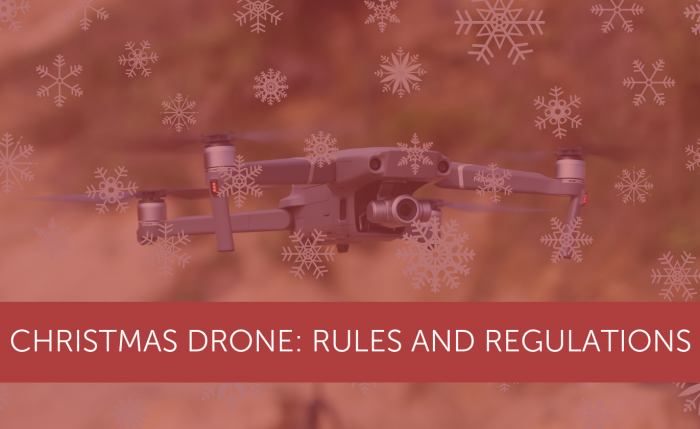
It's Christmas, and Santa Claus might have left a new drone underneath your tree.
If this is the case, then there's a good chance that you can't wait to take it out of the box and start your first flight. After all, owning a UAV is exciting - they're fun to fly and you can capture some great images and footage.
But before you take to the skies, it's very important that you understand the rules and regulations about using a drone to ensure that your flight is enjoyable, legal and safe.
So, here's 10 things you need to know about being a recreational drone pilot in the UK.
10 steps to follow
1) No higher than 400ft
It is against the law to fly your drone over 400ft (120m). This reduces the likelihood of a conflict with manned aircraft.
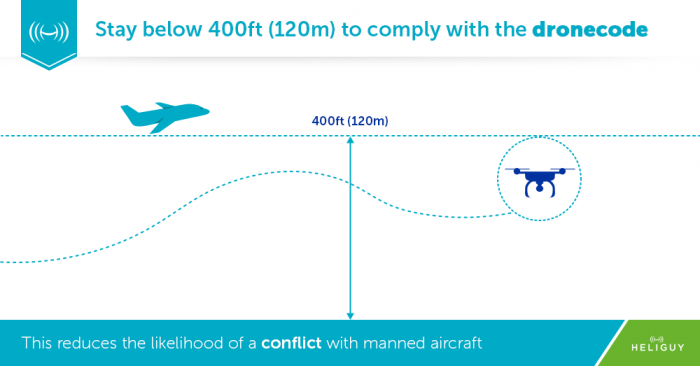
If flying over hilly/undulating terrain or close to a cliff edge, this may be interpreted as being a requirement to remain within a distance of 400ft from the surface of the earth.
2) Keep your drone in sight
Always keep your drone in sight. This means you can see and avoid other things while flying.
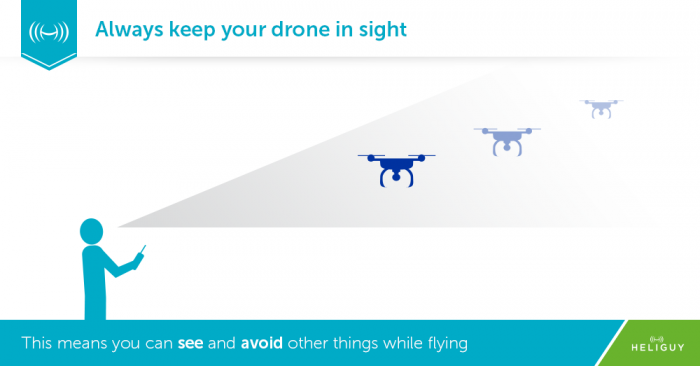
3) Follow instructions
Every time you fly your drone, you must follow the manufacturer's instructions. Keep your drone and people around you safe.
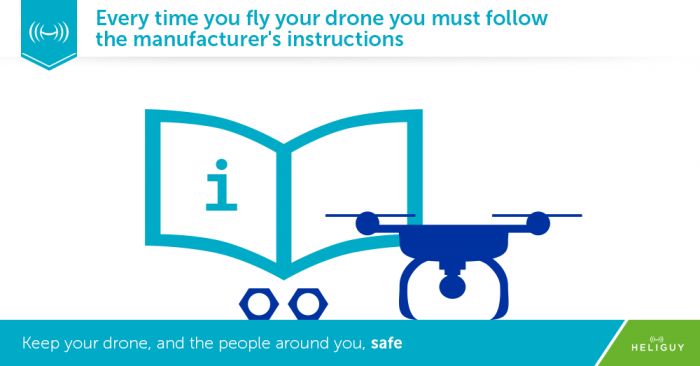
4) Keep a safe distance
Always stay 150ft (50m) away from people and property and 500ft (150m) away from built-up and congested areas and never fly over them.
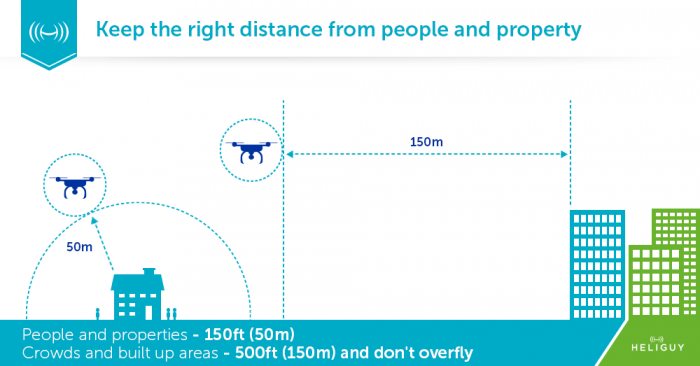
Unless granted CAA permission, a pilot who has a camera on their aircraft is not able to do the following:
Fly over or within 500ft (150m) of an organised open-air assembly where 1000+ people are in attendance;
Fly within 150ft (50m) of any vessel, vehicle or structure that’s not under the control of the pilot;
Take-off or land within 100ft (30m) of any person.
5) You're responsible
You are responsible for each flight and legal responsibility lies with you. Failure to fly responsibly could result in criminal prosecution.
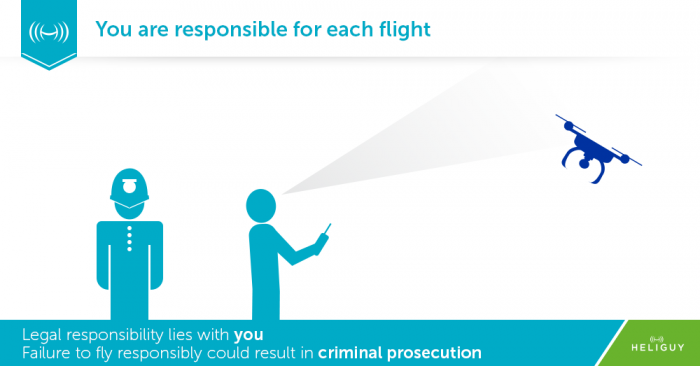
You must not endanger anyone, or any thing with your drone, including any articles that you drop from it.
6) Distance from airports
Stay well away from aircraft, airports and airfields.
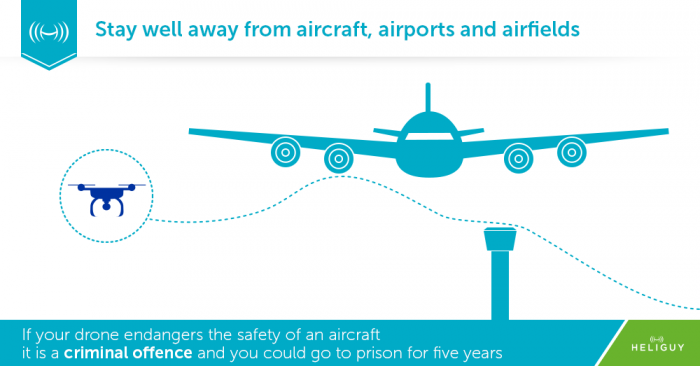
If your drone endangers the safety of an aircraft, it is a criminal offence and you could go to prison for five years.
It is against the law to fly a drone within 1km of an airport/airport boundary.
7) Weight of your drone
If your aircraft exceeds 7kg in weight, inclusive of equipment etc, you must also comply with the following:
Not fly in Class A, C, D or E airspace without the air-traffic controller’s permission
Not fly in an aerodrome traffic zone within the hours of watch, unless the air-traffic controller’s permission is received.

Unmanned aircraft with an operating mass of more than 20kg must obtain a specific authorisation, in the form of an exemption from some of the requirements of the Air Navigation Order 2016, before any flight can take place.
From November 30, 2019, owners of drones weighing 250 grams or more will have to register their drone with the CAA and complete an online safety test. Drone pilots who fail to register and sit the tests will face fines of up to £1,000.
8) Airspace Permissions
Drone pilots must also follow UK airspace permissions. These come in several different forms that apply to UAVs that include Prohibited Areas, Restricted Areas or Danger Areas (military ranges etc).
There are also areas that can be temporarily restricted for long or short terms which will be announced in Aeronautical Information Circulars or NOTAMs (Notice to Airmen).
9) Pre-flight checklist
So, you're aware of the rules and regulations. Now it's time to carry out a pre-flight checklist. For more information, click here or see our guide below. We also have tips about flying in the winter and advice about batteries.
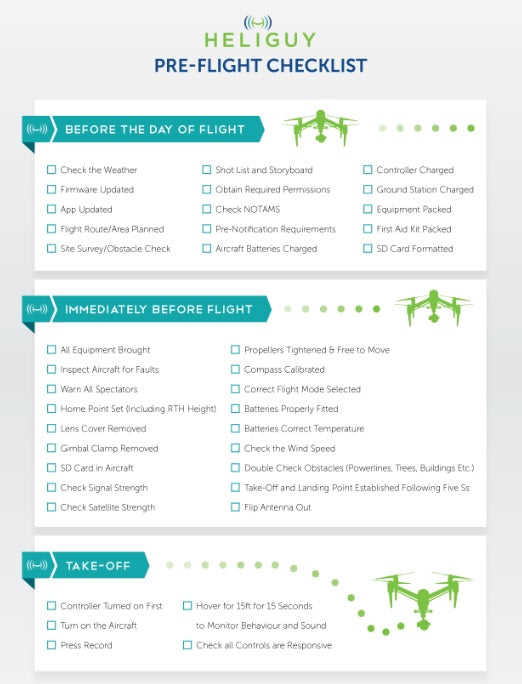
10) Training
If you’re not planning to get paid for flying your drone, then currently there is no legal requirement for any training, but you absolutely must comply with the drone code and other rules and regulations around flying your drone. To gain a better drone understanding, hobbyists can attend the Heliguy-run free DJI New Pilot Training Day.
But if you are planning on profiting from your drone, you must become an approved commercial drone operator. This is done by undertaking a training course with a CAA NQE in order to obtain permissions. For more information or to book a course with Heliguy, click here.

Heliguy is here to help you
So, you've received a new DJI drone for Christmas. But maybe you need some help and support with your new UAV?
Maybe you are struggling to update the firmware? Or you’re unable to sync your remote controller with your aircraft? Even, you can’t quite figure out how to use the new video mode?
Well, don’t panic. Because Heliguy has compiled a series of useful How To guides and tutorials to help you get started and make the most of your new drone and other DJI equipment. To see which drones are included, see our image gallery below or click here for a link through to our self-help guides.
If you are still struggling with your drone, give us a call on 0191 296 1024 or drop us an email on info@heliguy.com
Mavic-2-zoom-700x700.jpg
DJI Mavic 2 Zoom
Mavic-2-proregs-700x700.jpg
DJI Mavic 2 Pro
Mavic-Pro-1-700x700.jpg
DJI Mavic Pro
Spark-regs-700x700.jpg
DJI Spark
Mavic-Air-700x700.jpg
DJI Mavic Air
IMG_8816-700x467.jpg
DJI Inspire 1
Inspire-2-700x700.png
DJI Inspire 2
Phantom-4-700x700.jpg
DJI Phantom 4
Phantom-3-700x700.jpg
DJI Phantom 3
M210-reg.jpg
DJI M200 Series
osmo-pocket-700x700.jpg
DJI Osmo Pocket
Osmo-regs-700x700.jpg
DJI Osmo
Ronin-S-2-1-700x700.jpg
DJI Ronin-S
Ronin-2-1-700x700.jpg
DJI Ronin 2
Crystal-sky-700x700.jpg
DJI CrystalSky
goggles-regs-700x700.jpg
DJI Goggles
